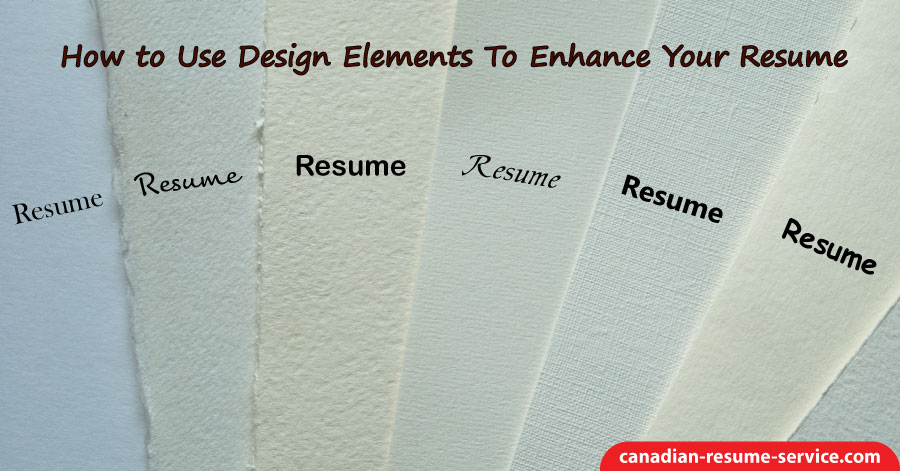Increase positive responses by incorporating design elements in your resume. Today, most resumes are submitted via email, posted on job boards, or company websites using an ASCII text version. Creating a visually appealing MS Word and pdf format is necessary, if not critical.
If you’re attending job fairs, performing walk-in applications, going to interviews, or only distributing it within your network of contacts, you’ll need a printed resume.
Like with your digital resume, your paper resume needs to make use of design elements effectively to make it more visually appealing.
A well-designed resume will increase your chances of being noticed and landing a job interview.
Easy Tips for Effective Resume Design Elements
1. Choose Attractive Resume Paper
When it comes to resume design, you need to consider the attractiveness of the paper you are planning to use. Most employers today are impressed with a more conventional yet highly professional look and style. Your paper must have a shade of either white, off-white, or a pale shade of gray. Choose an expensive resume bond paper, which is heavier than regular photocopy paper.
2. Resume Print and Font Size
The type of print will play a significant role in determining the overall visual impression of your resume. If at all possible, your resume must be laser printed, and all the typing, editing, and printing should be done using a computer. Ideally, your resume must not contain more than two different fonts.
The most recommended typefaces for professional resumes are Times New Roman and Arial. Although, fonts like Helvetica and Verdana are safe on resumes.
3. Resume Design
Design consistency is paramount. Focus on a particular style, and stick to it. Conform with the use of font, type size, capitalization, bold, italics, or any other formatting details. If you’ve decided to distinguish your subheadings, use bold subheadings and discard the italics. Giving your resume a consistent look will make it more appealing to the eye.
Use open spaces that won’t interfere with the readability and the professional look of your resume. The contrast between dark print and clean, white space can attract attention. Make your resume more visually appealing while maintaining its professional and business-like format.
For instance, consider utilizing bullet points to highlight key achievements and responsibilities in each job experience. This not only enhances readability but also draws attention to your accomplishments. Additionally, incorporating a subtle color scheme, such as using a muted accent color for section headers or borders, can add visual interest without overwhelming the document. Another effective technique is to incorporate icons or graphics to represent skills or qualifications, adding a modern touch to your resume while conveying information succinctly. Remember to use these design elements sparingly and strategically to maintain a polished and professional appearance.
Conclusion
Sometimes, a resume’s appearance will determine whether or not it will be read or go unnoticed. Effectively learning how to use design elements to make a resume more visually appealing can increase your chances of landing a job interview and, ultimately, a job offer.
Need additional help? Reach out to Candace for assistance!
Elevating your resume with effective design elements can be a game-changer in today’s competitive job market. Candace can provide expert guidance on optimizing your resume to stand out and attract the attention of potential employers. Whether it’s refining your layout, font choices, or overall design strategy, Candace offers personalized assistance to help you land your dream job.

